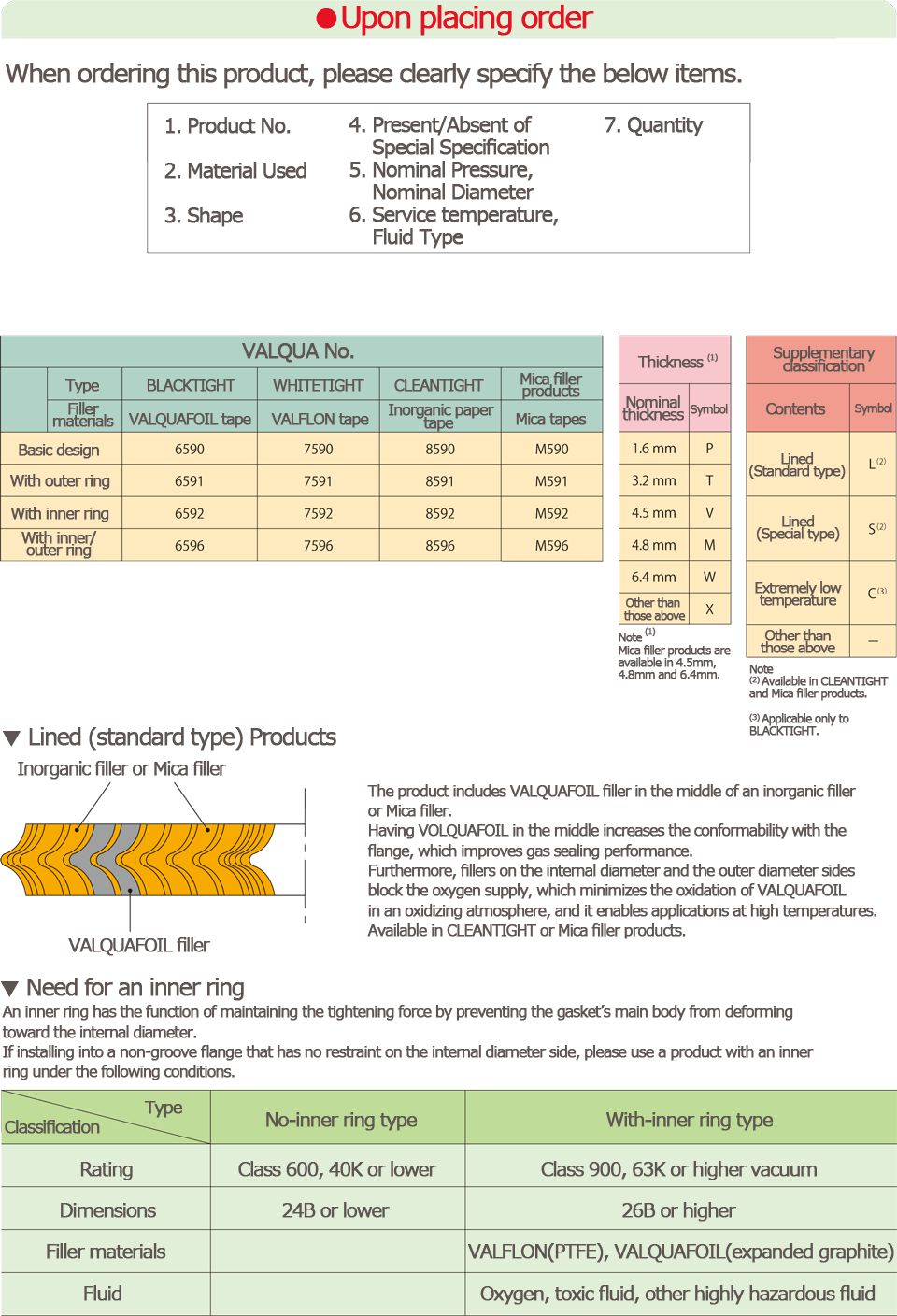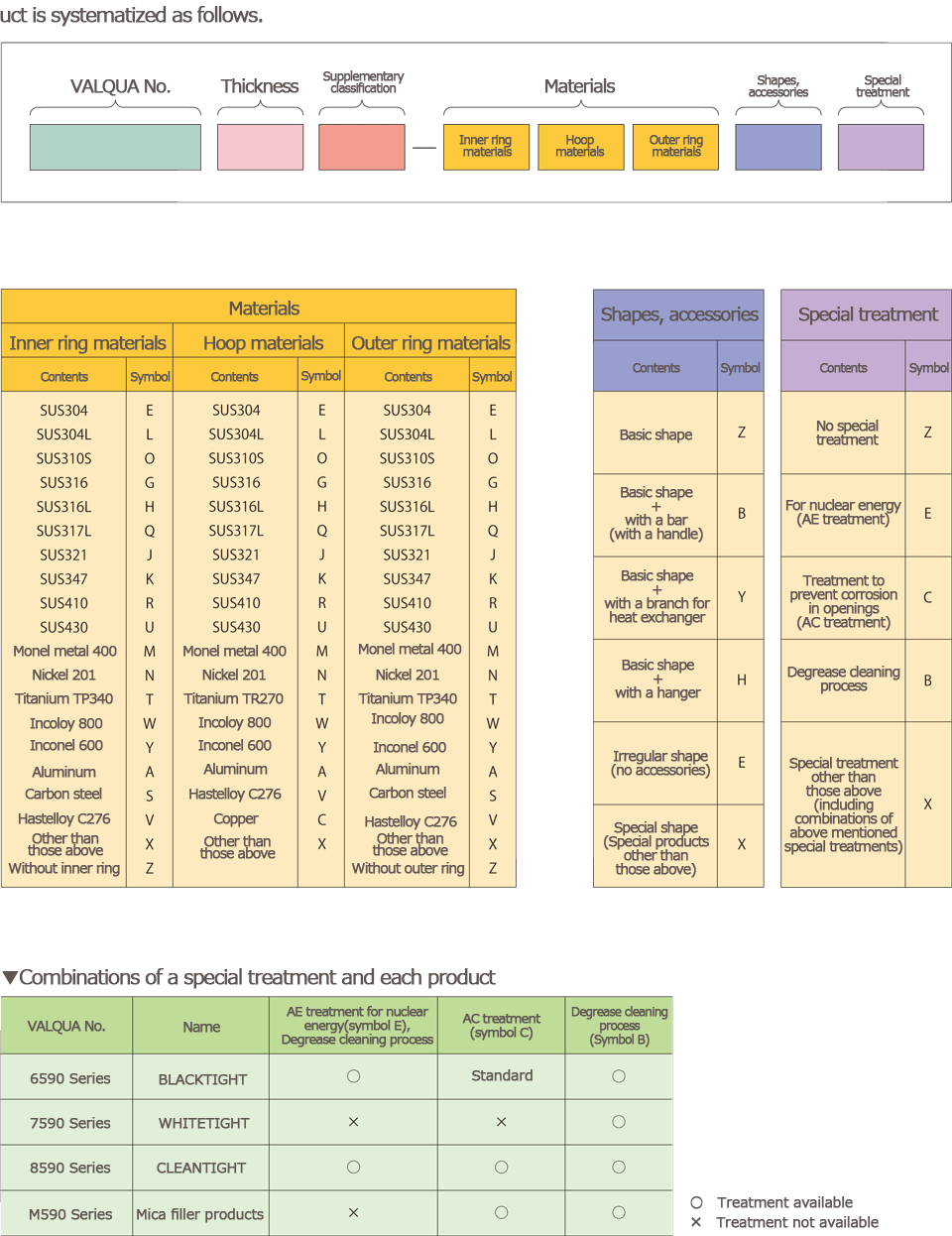VALQUATIGHT GASKET
Spiral Wound Gaskets use Non-Asbestos inorganic paper, VALQUAFOIL™ (expanded graphite) and VALFLON™ (PTFE) tape as filler materials, and exhibit good elasticity by means of a V-shaped hoop.

- VALQUA No.
- 6596VC
- Product name
- BLACKTIGHT(with inner/outer ring) for cryogenic application
- Features1
- Gasket for cryogenic application has excellent sealability at even low gasket stress as making 6590 series more flexible.
- Features2
- This has inner and outer rings. The outer ring of the gasket is useful as a guide for adjusting the amount of reinforcement and tightening of the gasket, making gasket centering easy.
- Features3
- In addition, use of an inner ring prevents the inner diameter side of this gasket from deformation even if the gasket is tightened too much. For this reason, gaskets with inner and outer rings are the most reliable high-temperature/high-pressure gaskets that can be mounted on raised face flanges.
- Features4
- This gasket possesses an excellent sealability under cryogenic conditions such as LNG.
- Features5
- A process has adopted that can seal even under low gasket stress.
- Applicable fluids
- Water, Sea water, Hot water, Steam,Crude oil, Alcohol, Animal & vegetable oil, Heat transfer oil,General solvent, Weak acid, Weak alkali,Strong oxidizing acid, strong alkali,Air, Nitrogen gas, Inert gas,Exhaust gas,Inflammable gas,Poisonous,Extremely low temperature liquids,
- Inappropriate fluid
- Oxidizing acids such as hot, concentrated sulfuric acid, concentrated nitric acid and oxygen.
- Application
- These are suitable gaskets to be used for applications where very low temperature fluids such as LNG, liquid nitrogen and liquid hydrogen and that requires sealing property at low tightening forces.










